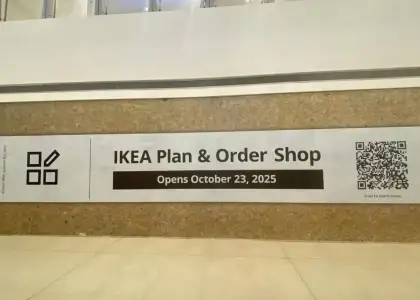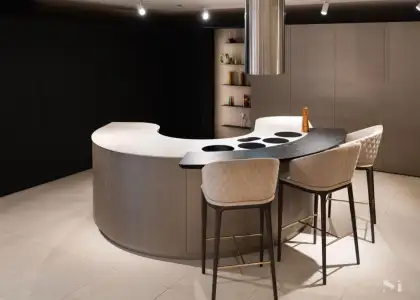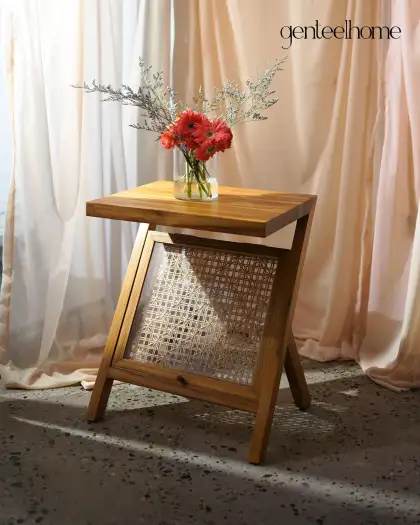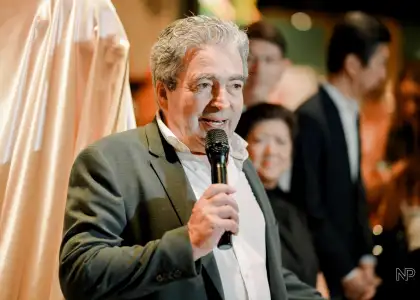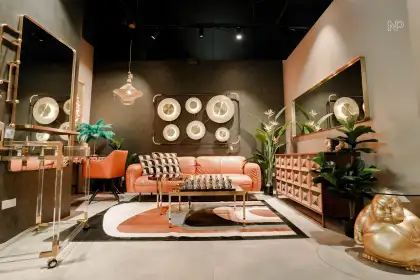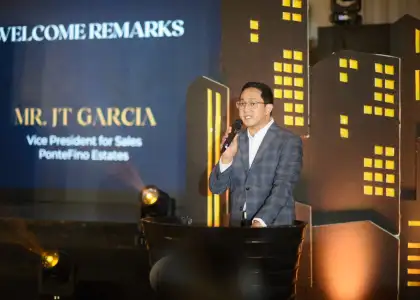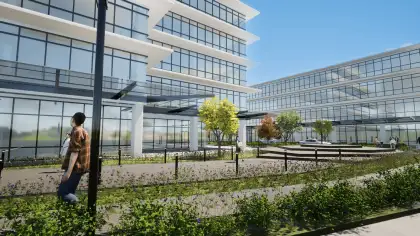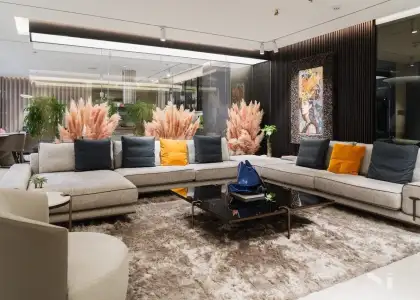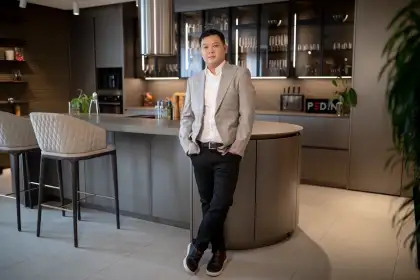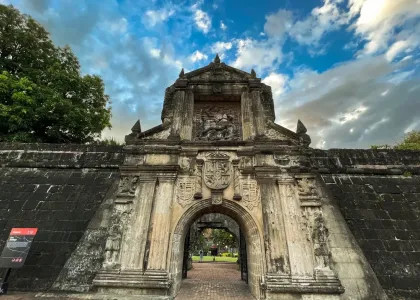Brutalist Pilipinas: Reexamining Concrete Giants, Protecting Built Heritage

From afar, the Cultural Center of the Philippines' (CCP) main building appears to be levitating. Except it isn't. The unmistakable concrete slab, which stands on reclaimed land, holds sway over the entirety of Roxas Boulevard. A monumental work of the late National Artist Leandro Locsin, the CCP opened in 1969 during the Marcos regime and is perhaps the most popular Brutalist structure in the country. It is imposing and intimidating for its sheer mass, unapologetic for its hard-edged bluntness; it looks as if it could swallow one in.

For all Brutalism’s associations with authoritarians and dystopian worlds, the emergence of this architectural style was precipitated by loftier aims and intentions. Brutalism rose from the ruins of war in the 1950s during a time when the world was at a crossroads; as it reeled from the socioeconomic repercussions of the Second World War, hope punctuated the air over the possibilities of recovery and transformation.
Brutalism exhibited the rawness of materials as they were; in the absence of decoration and paint, the material's essence – its truth – is laid bare. Seen in such a lens, as if new, the inherent qualities of Brutalism are made palpable: hopeful, emancipatory, communal. Yet it remains a type of architecture that consistently attracts extreme sentiments, from love to sheer hate, whose utilitarian and practical virtues have also become its bane.
For a movement that sought to democratize architecture as a discipline that served a community’s needs, it seems ironic that Brutalism has been regarded by many as the opposite: stifling if not oppressive, cold, ominous, bleak, or just plain "ugly" concrete monsters. In pop culture, Brutalist and Brutalist-inspired structures have figured in dystopian films like "A Clockwork Orange" (1971) and "Nineteen Eighty-Four" (1984), as well as the post-human capitalist world of "Blade Runner 2049" (2017).
So, how to relearn Brutalism? How to redeem an architectural style that is so misunderstood?

Context of an Architecture Much Maligned
Architect Dr. Caryn Paredes-Santillan of the University of Santo Tomas traced the history of Brutalism in a commissioned primer for Brutalist Pilipinas – a local initiative advocating for built heritage preservation. In “An Introduction to Brutalism,” it was understood that New Brutalism came to the fore due to the necessity of an architecture that catered to the needs of communities. New Brutalism, which was introduced in the 1950s by British architects Alison and Peter Smithson and took inspiration from Hans Asplund's "Nybrutalism,” reflected the spirit of post-war reconstruction, that from devastation came renewal. As per Paredes-Santillan, New Brutalism is distinguished by three aspects, namely "low-cost modularity, a focus on the purity of materials and construction, as well as the concept of fostering communities by designing forms that reflected their inhabitants and location."
The war’s end saw a boom in population, which led to a demand for new homes and other socio-civic centers for growing communities, which explains why a lot of Brutalist structures are government offices, theaters, libraries, public housing, universities, and more. Brutalism celebrated the mundane. It valued ethics over aesthetics, the community over the individual, and, due to the immediacy of post-war rebuilding projects, put a primacy on materials that were “affordable and quick to produce.”
In 1955, architectural critic Reyner Banham proposed his own foundations of the style. Paredes-Santillan wrote that while Banham's definition of Brutalism had similarities to the Smithsons’ New Brutalism, his definition was not in concordance with the latter. New Brutalism valued the ordinary, whereas Banham defined Brutalism as characterized by three aspects, specifically “memorability as an image, clear exhibition of structure, and valuation of materials as found."
A third type of Brutalism (without the ‘New’) likewise began to surface the world over, which came to be the Brutalism that is generally known today. Contrary to its name, Brutalism did not originate from the word “brutal” and in fact takes inspiration from Swiss French architect Le Corbusier’s "béton brut,” which translates to raw concrete. New Brutalism was particular to a locus, the United Kingdom, utilized other materials like glass, brick, and steel, and exhibited elements barebones like uncovered vents, pipes, beams, and ducts. Brutalism, on the other hand, was solely concerned with concrete, specifically its unfinished, undecorated state. It also became a regionalized style contingent on the unique contexts and conditions of a locality and, as per Paredes-Santillan, "inspired much of the architecture of decolonization."
Brutalist Pilipinas
Brutalist structures in Metro Manila and other parts of the country abound, if one only resolved to pay attention.
Brutalist Pilipinas, which began as a passion project in 2018, sought to document such buildings by sharing photos online and making a visual database out of Facebook and Instagram. It didn't take long, however, for the project's own aims to transform as its following steadily increased; it was a reality that at once astounded and scared its founder, who described himself as “intensely introverted.”
At present, Brutalist Pilipinas has close to 30,000 followers on Instagram. From one person, the initiative is now moderated by a small team of three creatives, of like-minded friends who share a passion for built heritage. In two years, Brutalist Pilipinas shifted its focus from raising awareness and taking photos to instigating action through the hard work of advocacy and scholarly research.
"We discovered that it was no longer enough to just raise awareness but to inspire action," Brutalist Pilipinas told The Beat Asia. "We can’t just keep watch and take pretty pictures as more and more examples of built heritage fall prey to neglect and ‘development.’ We are in a position to inspire action."
“It’s an advocacy-centered initiative, so there’s greater pressure to be on the right side of things, compounded by the complicated history and polarizing looks of the brutalist movement. But it’s all for the greater cause of preserving and documenting extant pieces of our history; this is a cause that is vital now more than ever with the advent of fake news and historical distortion.”
One of the aims of Brutalist Pilipinas is to contribute to the country’s knowledge production on Brutalism. Tapping Paredes-Santillan, who wrote her PhD dissertation on Locsin's architecture, for its free Brutalism primer was one such example, and the group hopes to raise more funds to produce similar publications in the near future.
Brutalist Pilipinas' City Guides, which can be accessed through its Instagram page, have covered Makati, Taguig, Mandaluyong, Manila, Pasay, Cagayan De Oro, Davao, Los Baños, and Cebu, thus far, with plans to include more Brutalist wonders from other cities in the Philippines.
The group said it organizes photowalks by selecting photographers from an open call, who are given less popular or accessible Brutalist buildings to cover. These photographers receive an honorarium from Brutalist Pilipinas, drawn from a portion of the proceeds of its merchandise.
Aside from this, Brutalist Pilipinas engages with the public by encouraging netizens to share their own photos using the pages’ hashtags so these can be curated by the team. The group also taps into different organizations and entities for collaborations, such as universities, architectural firms, and libraries, to feature photos from the archives of these institutions.
Moreover, Brutalist Pilipinas conducts its own archival research, which includes examining a number of magazines, blogs, films, digital archives, and more in search of photos, video clips, and information of Brutalism in the local context. As this painstaking process takes a lot of time and each member has their own day job to attend to, the group shared that it hopes to expand the team to bolster archiving efforts.
The Hard Yet Necessary Work of Advocacy
Brutalist Pilipinas' advocacy work for built heritage preservation isn't without its challenges. One of the issues it has encountered is the dearth of accessible material to the public, which has made vetting information difficult.
"It’s hard to verify small but important details like building owners, dates of inauguration, names of architects; it is also difficult to gain access to shoot buildings unless we forge a kind of relationship with building administrators...” Brutalist Pilipinas said.
“Yet another challenge is contextualizing the social and cultural life of the buildings, which includes tangential knowledge in business, cinema, history, and other fields. All of these we try to reflect in our captions; we cite books, films, and other sources properly so it would be easier for intrepid followers to take the research further.”
The group underscored, however, that a more pressing issue surrounds its advocacy work: the threat of demolition.
“A more urgent problem is the race against time, as buildings are being remodeled and demolished,” Brutalist Pilipinas said. “Last year, we wrote our first position paper regarding Locsin’s Ramon Cojuangco Building, though we fear this was not enough to save the building.”
It can be remembered that in May 2022, the Philippine Long Distance Telephone Inc. (PLDT) petitioned the National Commission for Culture and the Arts (NCCA) to remove the presumption of the Ramon Cojuangco Building (RCB) on Makati Avenue as an Important Cultural Property so it can be redeveloped.
The RCB, a work of the National Artist Locsin, was commissioned by the telecommunications company in 1974 to serve as its main headquarters. However, in its petition via CNN Philippines on May 18, 2022, PLDT said that the building "does not demonstrate exceptional cultural, artistic, and historical significance. Thus, it cannot be regarded as an ICP." Even more, the company said that the RCB does not reflect the visionary works of Locsin, as it is "generic, nondescript, and purged of any references to local culture, tradition, climate, or identity of the place."
Brutalist Pilipinas, at the time, wrote a 23-page position paper in strong opposition to PLDT's petition with guidance from the Heritage Conservation Society, titled “Beyond Individual Structures: Towards the Conservation of a National Artist’s Oeuvre.” Submitted on June 7, 2022, Brutalist Pilipinas' paper laid out four salient points, one of which is that the NCCA must ensure that "whole bodies of work" of National Artists are treated as ICPs instead of just looking at their individual works. Brutalist Pilipinas also disagreed with the petitioner that the RCB is not representative of Locsin's style, writing, "[We] posit that the RCB is in fact part of a segment of Locsin's work that reflects his engagement with floating horizontal forms stacked to form structures of varying heights."
It added that the RCB's interiors, although differing from Locsin's initial intention, are reversible. The building's ICP must be maintained "in favor of conservation and sensitive reimagination" so it can be reconciled with today's building technologies, designs, and environmental concerns. Lastly, unlike the petitioner’s claim, the group argued that the RCB indeed possesses historical and sociocultural importance, as it is the official headquarters of the Philippines' biggest and oldest telecommunications company and the setting of the country's first Internet connection in the '90s.
"Far too many [heritage sites] have been lost, and the Filipino people are further impoverished with every new loss," Brutalist Pilipinas wrote then. "The RCB must then serve as a strong statement to property owners – no matter how influential – that Filipino heritage is worth protecting, and therefore should not fall victim to wanton expansion."
Learning From the Bad of History
In the Philippines, Brutalist architecture developed during the Marcos regime, with a lot of government buildings constructed at the time made of reinforced concrete, according to Paredes-Santillan. Aside from the CCP, there were also Felipe Mendoza's Batasang Pambansa, Jorge Ramos’ Philippine Heart Center and Government Service Insurance Complex, and Locsin's National Arts Center, Nutrition Center, and Population Center, to name a few.
Constructed during a dark time marred by human rights violations, poverty, and martial law, these monumental Brutalist structures have since been associated by many with the “brutality” of the Marcos regime. The group underscored, however, that this is the reason why it’s crucial to learn the historical context of Brutalism.

“It was a post-war style, born out of Europe at a time when the world is raring to rebuild fast, in an economic manner and in a way that values the needs of a community more than the individual. Naturally, such an approach proved convenient to the dictators and authoritarian governments of the world,” Brutalist Pilipinas said.
“It is important to note that architectural styles are both products of and are at the mercy of its users. It is also important to be aware that even with the negative connotations it carries, it is now an indelible and incontrovertible part of history.”
The group added that one of the reasons why historical distortion has become rampant today is because parts of our Filipino past, such as heritage sites, are being destroyed. Demolishing such limited pieces of history, regardless of the dark contexts attached to them, thus becomes an act of historical erasure.
“Censorship, or the destruction of things, spaces and places that hold terrible memories, [does] more damage than leaving it for future generations to learn from or ‘exorcise.’ History flows in an unbroken stream and holds the key to our identities at present and as foundations to our future," Brutalist Pilipinas said.
"The beauty of celebrating brutalism and all architectural styles that preceded and followed it is to retain the integrity of our shared history, with all its color, texture, with all its peaks and lows."
#BetOnBrut! Go here for ways to support Brutalist Pilipinas' advocacy work.
Get the latest curated content with The Beat Asia's newsletters. Sign up now for a weekly dose of the best stories, events, and deals delivered straight to your inbox. Don't miss out! Click here to subscribe.
































